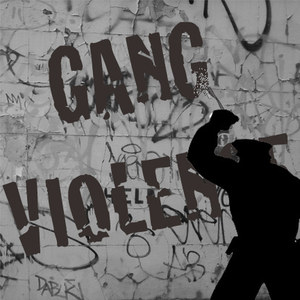More than temporary fix needed to combat gangs
We hear about violence all the time, whether while watching local news reports or reading the Los Angeles Times.
The news always deals with the same topics: theft, muggings, shootings, stabbings, extortion, kidnappings, rapes — the list goes on. After hearing about a particular incident, most people’s reactions are generally the same: a brief condemnation of the act followed by some sort of phrase either criticizing law enforcement or blaming the victim for not knowing better.
That’s about it.
But gang violence in Los Angeles has become commonplace, a sort of symbol for the city. People in Los Angeles have become inured to it.
Many of us avoid the gang-ridden areas and are unaffected by the terrorism many of their fellow Angelenos are facing miles across town — the terror of not knowing whether one may be unlucky enough to be caught in the line of fire between two warring gangs fighting for control of a couple of blocks.
LAPD has taken steps to fight gang violence in the city. Statistics show a slow but steady decline of gang-related violence in the city over the past couple years. Just a week ago, the LAPD conducted a massive operation against the notorious Avenues gang operating near Glassell Park. More than 1,200 police officers raided the area and apprehended nearly 50 gang members. The crackdown crippled the gang’s influence in the area and is likely to reduce its ability to gain new members.
But LAPD may be focusing too much on high-profile arrests and not enough on solving the underlying causes of gang violence.
LAPD already implements several programs to help troubled kids who might be inclined to join gangs. Jeopardy, which targets 8- to 17-year- old boys and girls, offers boxing and martial arts classes to children who might have family members in gangs, and LAPD’s Youth Advocacy Program and Deputy Auxiliary Police initiative target children and teens. But many of these programs are opt-in, and LAPD could be more proactive in getting young people to join.
The city has also made a high-profile push to root out gang violence and prevent children from gravitating toward gangs. In 2007, Mayor Villaraigosa created a new Office of Gang Reduction and Youth Development, and has centralized the process of reducing violence. The city has also targeted specific areas — Youth Development Zones, as they’re called — and moved resources into those areas.
If Los Angeles is truly committed to ridding the city of gangs, though, it must address some of the factors that cause them to join gangs in the first place: lack of security, money and self-respect. Social and community programs that foster a safe environment for kids to learn different skills and activities should be expanded.
Other offerings could train students in specific skills to help them find jobs quickly. If these programs could be institutionalized at a city-wide level, the arrests and raids may not be as necessary. Most importantly, if would given young people a choice between joining a gang and earning a living.
Which brings us to the money. Many teens join gangs to earn some extra cash or to support siblings and even parents. Los Angeles ought to set up a database or agency specifically targeting to inner-city teens who are looking for jobs. By offering teens places to work, the chance of teens joining gangs may lessen.
The question then, as always, is how to fund these programs. The answer lies in a combination of a neighborhood investment and large contributions from the city’s main educational institutions: colleges, universities and high schools. Gang violence affects the entire city, and educational institutions most of all. High school students in parts of Los Angeles are lured to gangs, and we at USC are not immune: the drive-by shooting of a USC track star last year was a stark reminder of how gang violence can invade any part of the city. These programs, if successful, would be a small investment that could have a huge impact in Los Angeles’ future.
And universities like USC could use these programs as opportunities for students to make a difference in their community and implement what they learn in the classroom. USC’s Joint Education Project could serve as a model for city-wide programs. Students from any major could participate, whether political science majors working with the city’s government, art majors teaching teens different forms of personal expression to spur creativity, theater majors playing improv games or chemistry majors that visit high school science classes and perform experiments. A collaboration between this city’s colleges and universities could create a broad workforce for these programs. High school students could also volunteer to fulfill community service requirements.
Arresting gang members reduces crime in a particular area for short periods of time, but it can’t permanently solve the problem. Los Angeles needs an innovative solution that encompasses all aspects of the city’s resources and population.
We shouldn’t accept gang violence as a part of Los Angeles anymore.
Angad Singh is a sophomore majoring in international relations and communication.

